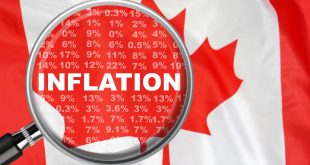Beyond forecasts, Amazon’s performance during Q1 was a remarkable success, with continued dominance in both cloud computing and e-commerce. The path ahead is not free from challenges, though. To sustain development trajectory, Amazon needs to strategically manage issues including consumer spending patterns, address intensifying competition, and economic concerns.
The massively popular e-commerce company startled investors on Tuesday by disclosing amazing Q1 earnings, which sent its stock up more than 3% in after-hours trading. One of the key success factors for Amazon was its consistent development throughout its core industries, with a focus on its cloud computing branch, Amazon Web Services (AWS). But fear does not go away because more challenges are anticipated in the next quarters.
Surpassing Expectations:
Amazon’s net sales in Q1 surpassed $143.31 billion; indicating a 13% rise over the previous year to reflect that the company’s primary retail operation is still growing. The earnings per share (EPS) exceeded the estimate of 83 cents and came in strong at 98 cents.
AWS Still Leading:
The persistence of AWS’s supremacy was a major factor in Amazon’s success. The segment that handles cloud computing generated net sales of $25.04 billion, a noteworthy rise of 17% over the previous year. This expansion highlights the growing dependence of enterprises on cloud-based solutions, a pattern that is anticipated to persist for the foreseeable future.
Retail Remains Stable, But Consumer Patterns Change:
Amazon’s primary retail division saw strong year-over-year sales growth of 7% to reach $54.67 billion, but a worrying pattern is worth noting. Consumers are becoming more and more cost aware, choosing less expensive products and looking for discounts. Investors are keeping a close eye on the company’s average sales price, which is being impacted by this trend.
Hopes or Wariness:
Market observers are still divided on Amazon’s future trajectory despite the company’s impressive Q1. A number of investment banks, including Bank of America and Goldman Sachs, kept their “Buy” ratings on the company and even raised their price targets. They cite advertising income and AWS’s potential for future expansion as the main causes for hope. Furthermore, Q, the AI assistant that Amazon has launched, is thought to be a game-changer that might increase sales by personalizing recommendations and expediting fulfilment procedures.
Some market watchers, meanwhile, advise against getting too excited. Both physical and online retail sales could be impacted by consumer spending being restrained due to the rising cost of living and possible economic slowdown. Amazon is also up against more and more competition from e-commerce giants like Walmart and Shopify, which are rapidly growing their product lines.
Above and Beyond the Stats:
In addition to the reported numbers, Amazon’s Q1 report provided a number of other significant insights:
In terms of profitability; compared to 1.2% during the same quarter previous year, Amazon’s operating margin for North America increased dramatically to 5.8%. This suggests that the company’s primary retail business has successfully reversed course.
As for global expansion; although North America continues to be the largest market, Amazon’s sales outside of the United States increased by a commendable 9.7% in the past year to reach $31.94 billion. Maintaining a presence in global marketplaces offers a substantial growth prospect.
In terms of costs associated with fulfilment:; at $22.32 billion, an increase of 6.8% year over year, fulfilment costs continue to be a major expense for Amazon. In an effort to reduce these expenses, the company is looking into ways to optimize its fulfilment network.
 Noor Trends News, Technical Analysis, Educational Tools and Recommendations
Noor Trends News, Technical Analysis, Educational Tools and Recommendations





